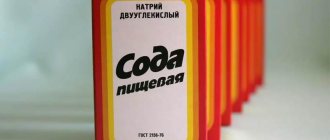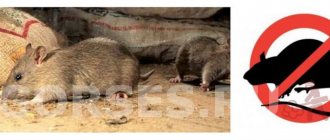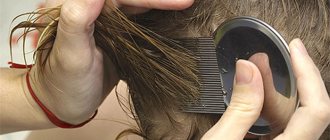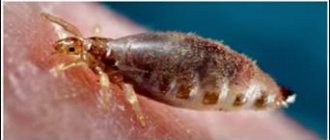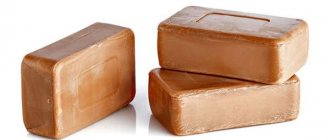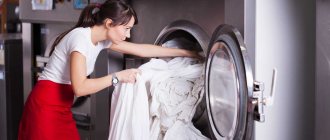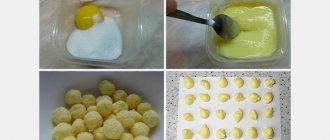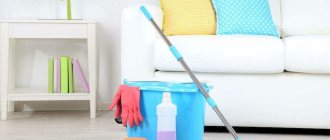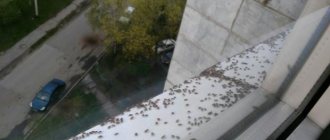How to treat an apartment and furniture
Disinfection of lice in the entire room is carried out after they have been removed from the head of an infected person. In order to avoid re-infection, thorough cleaning of the entire apartment or house is recommended.
Housing treatment includes the following activities:
- • carrying out general cleaning of the house - carpets and paths are cleaned with a vacuum cleaner or washed with water with the addition of chlorine, ammonia or vinegar;
- • it is recommended to treat carpets and other surfaces with hot steam;
- • special means are used to treat furniture and apartments: aerosols, sprays or solutions;
- • washing bed linen and clothes at high temperatures
Disinfection of lice in an apartment should be carried out in compliance with personal safety measures. Children, pregnant women and pets should not be in the room. During disinfection, it is necessary to protect the respiratory tract with a mask and hands with gloves.
After treating the room and furniture, you should ventilate the room and carry out wet cleaning again.
Facilities
Treatment for lice involves the mandatory use of toxic agents that have a detrimental effect on parasites. There are a lot of drugs on the modern market that will help remove insects and prevent their reappearance.
Before using the product, it is important to read the safety precautions.
Chemicals
Treatment of lice includes the use of various chemicals intended for disinfection of furniture, linen, bedding, and personal hygiene items. Such products contain substances that are almost completely harmless to humans and animals, but are destructive to parasites. Such drugs can be presented in various forms.
Aerosols and sprays
Various aerosols and sprays are used to treat the surfaces of cabinets, upholstered furniture, bed linen, and capes. The products in this group are non-toxic, that is, they are completely safe for humans. After treating a certain item with a spray or aerosol, there is no need to further clean or rinse it.
Solutions
Concentrated emulsions intended for the preparation of disinfection solutions are similar in specificity to sprays. The preparation for the procedure should be prepared according to the rules written in the instructions attached to the drug. As a rule, such solutions simply need to be sprayed over surfaces using any spray bottle.
Powders
Preparations presented in the form of powders are the most inconvenient option for products intended for treating clothing against lice. In addition, their use is fraught with the risk of small particles of powder getting into mucous tissues, eyes, and respiratory organs. After completing activities that include the use of powders, you should definitely wash the treated items; they cannot be used before, since there is a high probability of intoxication of the body.
Soap
The safest, most effective, and cheapest remedy that can be used to treat almost the entire house for lice is laundry and dust soap. To prepare a saturated solution that will help eliminate uninvited guests, you need to grate or otherwise grind a bar of soap, then place it in a bucket of hot water.
This solution can be used for washing, disinfecting pet hair, cleaning furniture, floors, and walls.
Pencils cream gels
Products presented in the form of gels, pencils, and various creams are not convenient when treating large surfaces, such as floors. However, they can be used to disinfect clothes, small items, and combs. After completing the activities, it is recommended to rinse the items in hot water.
Processing of linen and clothing
Head lice are able to remain active when they get on the pillow. Body lice also persist for a long time in bedding. Therefore, it is very important to disinfect against lice by thoroughly treating clothing and all bedding.
Linen and clothes are placed in a bag to prevent lice from getting on the carpet when carrying items to the washing machine. Then they are washed at a temperature of at least 60 C for at least 30-40 minutes. Things need to be dried outside.
After drying, all clothing and bedding are ironed with a hot iron, paying special attention to seams and folds.
Treatment algorithm for pediculosis
Insect control must be carried out comprehensively. You need to get rid of lice both on the patient’s hair and at home. Only in this case can you be sure that the insects will not return soon.
The fight plan includes several stages:
- sanitizing the infected;
- cleaning instruments;
- processing and washing of clothing, bedding, personal belongings;
- cleaning and disinfestation of the apartment (house).
Cleaning of the apartment
For effective results, it is necessary to take each procedure responsibly.
Treatment of the patient
Sanitary treatment of a patient with pediculosis is carried out with special preparations, folk remedies and mechanical methods. The best results can be achieved using chemicals from the pharmacy. Traditional recipes will complement treatment and will also play an important role in preventing re-infection.
Hospital placement is required in very rare cases, when the infection is very severe or complications are observed, for example, severe allergies. Basically, treatment of a patient with head lice is carried out at home, the doctor only prescribes a treatment regimen and selects the most suitable drug.
To treat the head for head lice, medications are available in the form of:
- shampoo;
- spray;
- ointments;
- lotion;
- cream.
Each form has its own characteristics, pros and cons. Most modern drugs get rid of parasites after the first use. To consolidate the result, repeated treatment is recommended after 10 – 15 days.
How to treat things for lice?
During the period of active treatment and immediately after it, it is mandatory to treat things and clothing for lice. Parasites can appear not only on a headdress, but also on a scarf, underwear, home clothes or outerwear. If you ignore cleaning, re-infection is guaranteed soon.
Particular attention is paid to the patient's belongings. But for greater safety, it is worth treating the clothes of all family members, paying special attention to the clothes of the one who helped the infected person carry out medical procedures.
Garment processing
Treating clothing against lice can be done with insecticidal agents. One of the most convenient ways is to spray things with an insecticidal spray, then put them in a bag and leave them for several days. The main thing is that the chosen drug is suitable for these purposes. You can also use folk recipes. For example, soak things in a solution of laundry, tar or dust soap with the addition of kerosene.
You can treat things against lice with a steam generator or iron them. Another option is to expose them to high or low temperatures. In winter, clothes can be taken out onto the balcony (or, if possible, outside). A freezer will also work.
A classic and very effective method is to take your items to the dry cleaner. In this case, you won’t have to deal with labels to find out which cleaning method is suitable for a particular product. This will be done by specialists.
Washing things
For many items of clothing, regular machine washing is suitable as a head lice treatment. The only condition is that to get rid of lice, clothes must be washed at a temperature not lower than +60⁰С or boiled. When boiling water, you can add soda - this will enhance the effect.
Washing things
After washing, items should be ironed with a hot iron, paying special attention to seams and folds, favorite places for parasites.
Treatment of bed linen for pediculosis
Treating bed linen for lice is a very important step, especially in case of infestation with pubic or body lice. Parasites can remain on pillowcases, duvet covers, sheets, and also crawl onto pillows, blankets and mattresses. Therefore, processing must be carried out with utmost care.
Pillowcases, sheets, duvet covers, as well as clothes, can be soaked in a soapy solution with kerosene. After this, they are washed with boiling water and then ironed.
Disinfestation of pillows
Washing a pillow without ruining it is quite difficult. So it's best to replace the pillow. But if this option is not suitable, then anti-pediculosis treatment will consist of packaging in a sealed bag for 10 - 12 days. During this time, all parasites will suffocate. After this, you should resort to dry cleaning services.
How to treat blankets
When parasites are detected on a person, the likelihood that several individuals have occupied his blanket is very high. Especially when it comes to bed lice. Here, as in the case of a pillow, the best option would be to buy a new blanket. If this is not possible, then the blanket is placed in a bag that is tightly closed. After 10 days, the bag can be opened and the blanket sent to the dry cleaner for final treatment.
Cleaning instruments
A comb and hair accessories are the main source of danger for household members if there is a person with head lice in the house. Immediately after discovering parasites, the combs must be treated as soon as possible; the same procedure is repeated each time after combing out lice and nits from a patient.
There are several most popular options for treating combs against lice:
- any insecticidal agent intended to get rid of parasites;
- treatment with a mixture of vinegar and hydrogen peroxide;
- soaking in soda solution;
- scalding with boiling water (if the comb material allows), and then wiping with alcohol or vodka.
Hairpins, elastic bands, and hoops are also treated with an insecticide, or soaked in boiling water or vinegar solution, and then washed thoroughly with soap. In addition, you must strictly ensure that everyone uses only their own comb, elastic bands, barrettes, hoops and other hair accessories.
Cleaning the house
Cleaning is carried out twice - before treating the room for lice and after it. Cleaning includes wiping all surfaces with a damp cloth, using a vacuum cleaner for carpets and upholstered furniture, and washing the floors. It is advisable to add vinegar, ammonia or chlorine-based products to the cleaning water.
In addition, you need to remove and wash or dry clean all textiles: curtains, bedspreads, capes, blankets, soft toys.
How to treat your house (apartment) and furniture for lice
Pharmacies offer a wide selection of insecticidal preparations for treating apartments against lice and nits. Lice can remain in upholstered furniture, so special attention must be paid when processing it (especially when body lice are detected). The same parasites as pubic lice can remain in the bed. So its frame and mattress also need to be processed. There are special preparations for treating furniture against lice that do not leave stains or damage the coating.
Furniture processing
The premises are treated with closed windows in the absence of residents and pets. After waiting the time specified in the instructions for the drug, the apartment is thoroughly ventilated, after which it is cleaned again.
How to process things
When disinfecting an apartment from lice, mattresses, toys, fur and carpets require careful treatment.
Large fur items can be dry cleaned or placed in the cold for a long period. Things that are not afraid of high temperatures are treated with steam from a steam generator. Mattresses are dried outside in hot weather or exposed to hot steam.
Toys, hats, scarves, and hair accessories (hairpins, elastic bands, jewelry) are subject to mandatory treatment when disinfecting against lice. They can be boiled and ironed with a hot iron or treated with special means.
Combs and combs also require careful disinfection. To do this, they are wiped with vinegar or a solution of hydrogen peroxide and water in a 1:1 ratio. Then the hair care products are placed in boiling water for 2-3 hours. After such treatment, combs and combs are washed with ordinary warm water and soap and wiped dry.
If you don’t have time to disinfect your apartment from lice on your own, you can use the services of special services.
How to treat pillows for lice
They wrote to you correctly about paranitis. Nuda is a similar product - both are good, Nuda has a specific smell that lice are afraid of. but not all children like this smell. The whole family needs to be steamed at once, combed out with a comb over the bathtub, bed linen changed and washed at 60C - after that they will definitely die. Hats and caps, scarves, scarves, clothes with a collar - either wash at 60C, or tie them in bags and put them away for 2-3 weeks. lice also freeze out - in winter you can put the bed on the balcony. In the summer, you can, for example, put your favorite cap in the freezer between wears.
That's it, if you have thoroughly treated yourself with paranitis, then you don't have lice. But there are definitely nits - they won’t all die at once, especially if the hair is long. and you won't comb them out. Therefore, treat children EVERY day in the morning before school for 1 week. then 1 week once every 2-3 days, then once again after 7 days. Everything that hatches overnight will die. In principle, you can do it less often (lice can reproduce only 7 days after they hatch), but do you want them to scatter among family and friends? You can process yourself less often.
There is no need to be afraid that the shampoo will cause harm - paranit/nude consist of a soap base, fragrance and vegetable oils. They have a mechanical principle of operation - oil envelops the louse and it suffocates.
And yet, lice do not spread to all children. they really love heads with weakened immune systems - pay attention to this, especially if the children are meteoropaths, they have increased fatigue, periodic headaches, and blood pressure increases.
We personally got rid of lice according to the scheme described above. but there were relapses, because lice are common at school and in camp. I got rid of relapses after treatment with a good osteopath.
There should be common sense in everything, about the carpet this is too much in my opinion, then all the upholstered furniture is for naught. I think it’s right to treat the hair, comb it, check it daily, use hellebore water for family members for prevention (by the way, it strengthens hair well), wash bed linen and hats. What kind of steaming of everything? Is everything so neglected and all family members are lousy?
I encountered it 3 times with the eldest and 2 times with the youngest, they were exterminated quite quickly, the family did not have time to become infected. The last time I bought a Russian-made pediculin product at the pharmacy, it helped the first time.
Immunity has nothing to do with it, just a piece of advice for the future: if a child starts scratching his head, immediately look carefully, it’s been tested in my experience, children just don’t scratch their heads, which means there’s already at least one.
I ironed the blankets and pillows. Collars on outerwear too (we had them in winter). I didn't do anything to the carpet. You can simply put the elastic bands in a plastic bag and tie them tightly for a month. I filled the combs with product and treated them like hair. In general, it is believed that a louse lives outside the body for no more than 3 days, but nits are more tenacious (up to 2 weeks), but you won’t see them outside the hair; they hold on too tightly. I'm talking about upholstered furniture and carpets. Hence the advice - if it is not possible to steam, then blankets, rugs, bedspreads are put away for 3 days in a large plastic bag and tied (like for garbage). And hence the advice on funds - to re-treat after 7-10 days (if the nits have not died and new insects have hatched and if such a re-infection has occurred in everyday life). Now this is not uncommon. The eldest regularly brings it from the garden before, now from school, the last time was probably caught by both daughters at the hairdresser. and I was infected. Last summer. When I discovered it, it turned out so lucky that we were going to fly away on vacation in two days. Before leaving, I processed everyone, changed their linens, and washed them. stroked the pillows. and flew away into the night. At home, if any of the insects remained alive, they all died within 2 weeks
I advise you to understand what nits look like and regularly examine your daughter for their presence. Usually it all starts with them. You can also put a couple of drops of rosemary or tea tree oil on your hair for prevention. or add to shampoo. There is a certain type of people to whom these creatures often stick, either with their hair or with their skin. But our dad has never become infected, although he is in close contact with children constantly
How to treat infected people
The most radical method of getting rid of head lice is cutting your head bald. But this method is not suitable for women and girls.
In order to get rid of lice and nits, various drugs or folk remedies are used. Their goal is to eliminate living insects and their waste products.
After treating the scalp, you need to thoroughly comb the hair with a special comb to remove nits attached to the hair. The hair is combed out strand by strand along its entire length for at least 30-40 minutes.
Body lice (linen lice) are much less common than head parasites. But if infection occurs, you need to take a shower with special shampoo and wear clean, disinfected or thoroughly ventilated clothing.
Where do lice come from?
Methods of infection
The spread of such dangerous parasites as lice always occurs in various places where people live, and especially often when their settlement is too dense. Head lice, like the less common body lice, multiply especially quickly in a variety of barracks, communal apartments, and refugee camps. During the war years, lice plagued soldiers in deep trenches and barracks - in places with dense human concentrations, these bloodsuckers feel extremely at ease and people do not know how to get rid of lice. Lice pass from one person to another in the following ways:
- Lice can easily spread from a sick person to another. This often happens among those people who share the same bed, as well as between small children during all sorts of joint games. This is the main and most popular method of transmission of parasites.
- Head lice are also transmitted through any hygiene or household items. These are towels, combs, as well as hair ties and all kinds of hoops. From there they end up on the head of any other person when using the above things in a group. This method is quite rare, however, it does happen.
- Lice also spread well through shared clothing. For body lice, almost any clothing that has nits and adult bloodsuckers is relevant, and for head lice, these are a variety of hats, jackets with a hood, and scarves.
You should be aware that head lice carriers are all people with any number of these parasites on their heads. True, the more a certain person is infected with these insects, the greater the likelihood that they will easily fall from him onto household items or furniture. Therefore, it poses a greater risk of infection. Nits, due to their inability to move, can be transmitted solely by the person himself: the use of shared combs, on which hairs with eggs attached are often left, various towels, shared bedding or clothing, on which hairs infected with parasites often remain.
Prevention of occurrence
In order not to think later about how to get rid of lice, you need to constantly follow the well-known rules of personal hygiene, as well as monitor the general condition of your hair. All those who have long hair in any public transport are recommended to tuck it under their clothes or put it in a ponytail.
- Never use other people's hairpins, combs or hair ties.
- Do not use other people's towels and various hygiene items for yourself.
- Don't sleep on someone else's bedding on the train; it's better to take it with you from home.
- Also, do not wear other people's hats.
If someone in your family is found to have lice, then along with treating the patient, special measures must be taken to prevent the spread of insects. All linen and hats of the infected person should be boiled and thoroughly ironed. It is also necessary to warn all contact persons to undergo a full examination by a doctor.
How to treat: folk remedies
Various folk methods have proven themselves in effective disinfection against lice.
For disinfection, you can use vinegar, tar or laundry soap. These products are used both for cleaning and clearing the apartment of lice and nits, and for treating the scalp of infected family members
To repel parasites, various herbs are used, such as tansy, peppermint, wormwood, and eucalyptus. They can be placed under the carpet, on sofas. The baseboards are wiped with a vinegar solution. A mixture of salt and soda is used to wipe upholstered furniture.
Parasites do not tolerate strong odors, such as garlic or citrus skins. To do this, crushed products are laid out in small quantities around the room. However, such a measure can only be regarded as preventive.
What kind of parasites are these?
Lice are parasitic insects whose food source is human blood. Parasites are transmitted during contact with a person with lice.
Conventionally, these insects are divided into the following types:
- head lice are inhabitants of the scalp;
- pubic lice are insects that cause discomfort to a person in the groin area, as well as on the eyelashes and eyebrows;
- Body lice are insects that live in the folds and seams of clothing.
Due to the tiny size of the insects, as well as their rapid reproduction, it is very difficult to remove lice. After all, a larva hatched from an egg becomes a sexually mature individual within 8-20 days. And given the fact that the lifespan of parasites on the human body can reach about two months, it becomes very easy to assess the scale of the problem. Only timely treatment of the apartment from lice will help deal with bloodsuckers quickly enough. Otherwise, the grueling struggle will begin from the very beginning.
Rules and precautions
- • all disinfection measures are carried out wearing a mask (respirator) and gloves;
- • all food products in the house must be kept in tightly packed containers, out of reach of disinfection measures;
- • upholstered furniture should be processed when unfolded
- • household appliances and electrical appliances must be covered with film or thick fabric;
- • you can enter the room 2-3 hours after disinfection and ventilation;
- • it is advisable to repeat the procedure 2 weeks after the initial disinfection.
Rules
To ensure the effectiveness of treating things and premises from lice, it is recommended to adhere to the following rules:
- Before processing, carry out thorough cleaning, first washing all items and removing food. Cleaning will help remove a large number of nits.
- Chemical disinfestation must be carried out with gloves and a mask.
- Follow the instructions for using the chemical.
- You should not stay in the room for several hours after treatment.
- The belongings of all family members must be disinfested.
- Prevent the appearance of insects: thoroughly wash baseboards, cracks and other hard-to-reach places.
How not to repeat the spread
In order to prevent a new infection, all family members must follow preventive measures. First of all, this applies to children who attend preschool educational institutions and school. The child needs to regularly examine his head, and at the first sign of infection, report it to the kindergarten or school. The sooner parasites are detected, the easier it will be to remove them without physical and moral suffering for the child.
Other preventative measures include:
- • observe all rules of personal hygiene, avoid close contacts with potential carriers of lice;
- • regularly change bed linen and wash clothes;
- • use individual combs, hair ties, towels, and never lie on someone else’s untidy bed;
- • after washing, iron bed linen with a hot iron
- • carry out regular wet cleaning of premises.
When lice are detected, effective and safe preparations must be used to remove them. Folk remedies for removing lice are recommended if lice need to be removed urgently, but it is not possible to use more effective methods.
GorSES - effective destruction of parasites
If trouble happens and lice appear in your home, GorSES will definitely come to the rescue. The company provides services for treating contaminated premises throughout Moscow. The cost of the service depends on the volume of the room being treated and the degree of infestation. Detailed information about prices can be found in the company’s price list. Lice treatment is carried out with cold and hot fog. This allows you to achieve a positive result in a short period of time. The effect of chemicals lasts for several weeks, even in places where it is quite difficult for humans to reach.
Can't defeat parasites on your own? Are you bitten by lice, your whole body itches and you have a hard time staying at home? Call our company by phone and specialists will arrive at a time convenient for you. We will rid your home of harmful insects, ensuring safety and peace of mind.
Effective treatment
Among the drugs that leave no chance for parasites, one of the most effective is Paranit. Its action is harmful to lice, but safe for humans. The result is achieved thanks to the active ingredient demethicone. In combination with mineral oil, it interferes with the normal functioning of the insects' respiratory system. One treatment is enough to get rid of lice.
“Paranite” is easily applied to the hair, does not cause a burning sensation or discomfort, and is washed off well without leaving any sticky residue. Forms of release of the drug - spray, lotion, shampoo.
After applying to your hair, you need to wait 15 minutes and rinse off any remaining product with warm water and shampoo. Then you should carry out the procedure of combing out nits using the comb that is included in the kit.
The drug has no contraindications for use. "Paranit Sensitive" can be recommended for children and pregnant women. Unlike many toxic folk remedies, Paranit does not cause the risk of scalp irritation or allergic reactions. If necessary, it can be reused. The anti-pediculosis agent not only has a healing effect, but also improves the structure of the hair, making it thicker and softer.
Chemicals for pest control
Treatment for pediculosis is preferably carried out with chemicals, since this method is affordable and effective in the fight against parasites. Chemical preparations are of the following types:
- Aerosol is often used to treat things, furniture and bedding. This method is widespread due to its ease of use.
- Gel or cream. With their help, they get rid of lice on clothes. An ineffective remedy in the fight against lice, because with the help of gels and creams it is impossible to cover a large area of the apartment.
- Powders are used to get rid of nits and lice on furniture.
- Emulsions. A solution prepared with water is used like a spray, spraying it over the surface of the furniture.
- Pencils and crayons. Suitable for processing hard-to-reach places.
The chemical preparation Dichlorvos has proven itself.
The following chemical preparations have proven themselves for use at home: Dichlorvos, Combat, Reit, Delta Zone.
